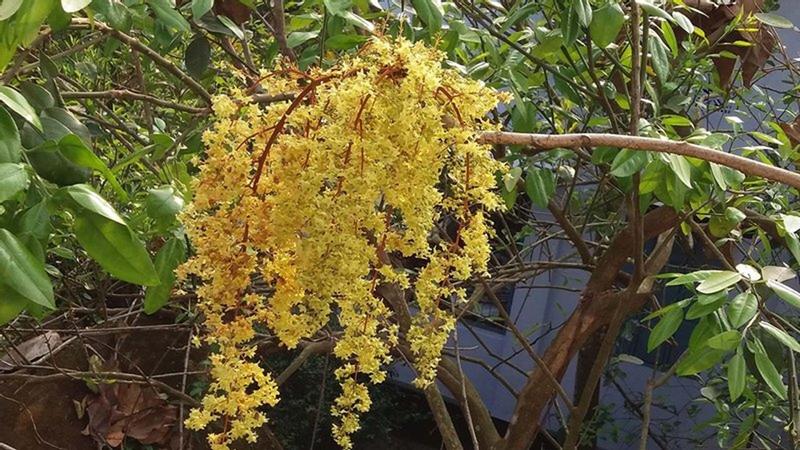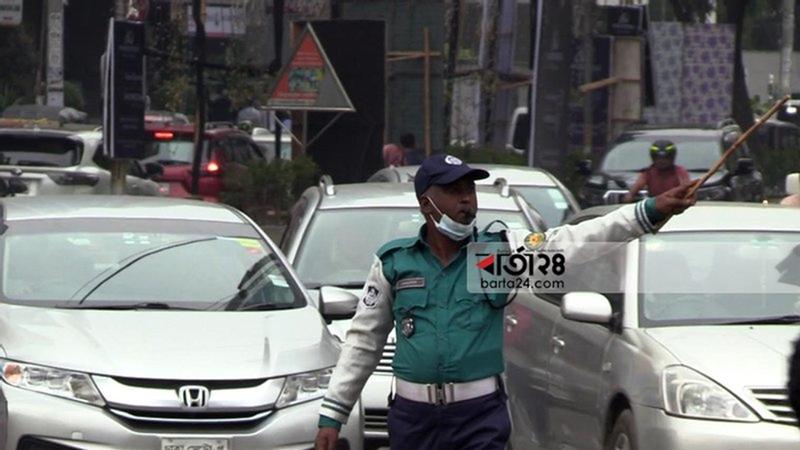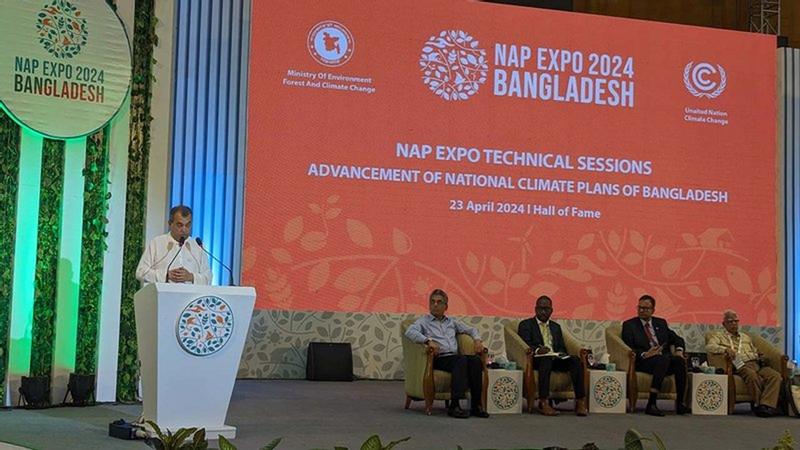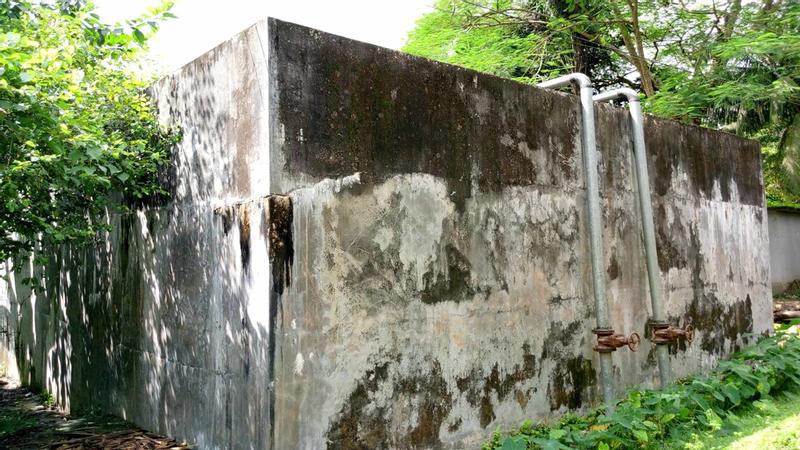Bangladesh is Korea’s priority partner country: Lee Jang-keun

Ambassador of South Korea (Republic of Korea) in Bangladesh Lee Jang-keun
Ambassador of South Korea (Republic of Korea) in Bangladesh Lee Jang-keun said, In terms of ODA, Bangladesh is Korea’s priority partner country and the third largest recipient of ODA with a total volume of 790 million US dollars between 1987 to 2019. Infrastructure is another area where the two countries have developed close ties in recent years which has led to the launch of the PPP (Public-Private Partnership) platform between the two governments in 2019. People-to people and cultural exchanges also played important role in the strengthening of our bilateral ties. Currently there are around 20,000 Bangladeshi people living in Korea, most of whom are expatriate workers and their families.
He said this in an interview with Bangladesh Travel Writers Association (BDTWA) recently.
In this interview, Lee Jang-keun also said, we are making an effort to establish direct airline connections between the two countries.
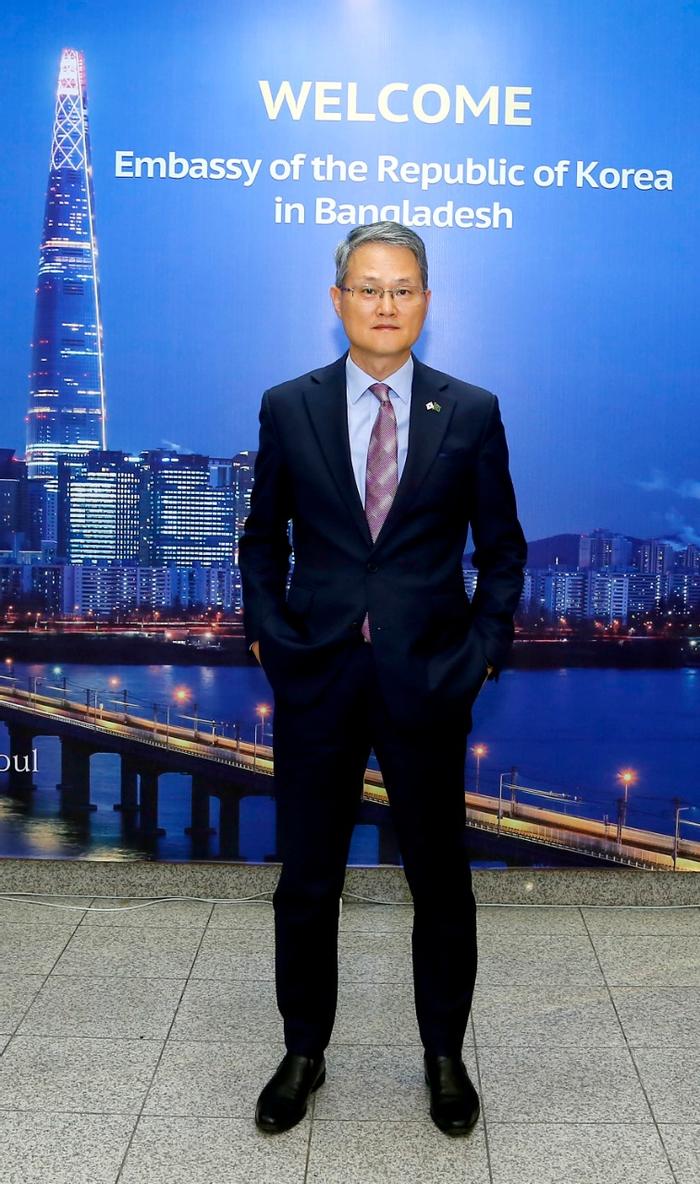
BDTWA has the opportunity to participate in Korean Film Festivals and Korean Travel Fair in National Museum last year. BDTWA president Ashrafuzzaman Uzzal made a wonderful power point presentation on that program. BDTWA team meets with H.E. Lee Jang-Keun several times and arranges the interview. Interview is taken by Ashrafuzzaman Uzzal and Shakil Bin Mushtaq. Md. Zakaria Mondol was present in the pre-interview meeting. Here is the interview of the Excellency-
Ashrafuzzaman Uzzal: How H.E sees the role of South Korean companies, in the beginning and growing phases of Bangladesh's RMG industry, which became the world's second largest RMG exporter, has been well known to many Bangladeshis?
Lee Jang-keun: RMG has been the center of Korea-Bangladesh business ties since the establishment of the diplomatic relations between our two countries. Korean companies have played a central role in the development and growth of Bangladesh’s RMG sector. Mr. Nurul Qader, founder of Desh Garment and father of Bangladesh RMG industry, entered into a partnership with a Korean company, Daewoo Corporation in 1979. According to the agreement with Desh Garment, Daewoo invited 133 Bangladesh engineers, workers and managers to Korea in 1979 and gave them training for 6 months. With Daewoo’s technical cooperation, Desh Garment has grown to be the leader of the Bangladesh RMG sector. Those who went to Korea for training, including the late mayor of North Dhaka City Corporation, Mr. Anisul Haq, scattered around the country and planted the seeds of the Bangladesh RMG industry.
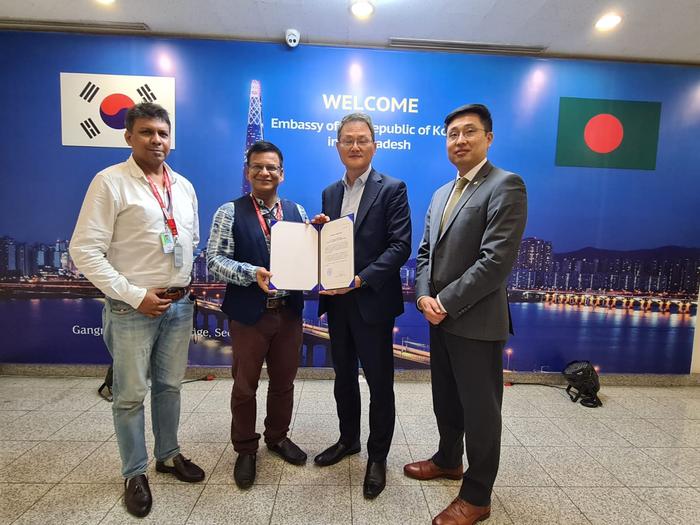
At present Korea is the 5th largest FDI country in Bangladesh with a stock investment volume of 1.4 billion dollars as of the end of 2021 out of which 924 million dollars is in the RMG sector. KEPZ in Chattogram is the first and largest private EPZ in the country operated by Youngone Corporation. There are around 100 Korean RMG companies in Bangladesh employing around 200,000 local workers. Youngone alone has invested more than 600 million US dollars employing more than 70,000.
In order to share the success stories of Korea-Bangladesh RMG collaboration, my Embassy recently prepared a video documentary of bilateral relations focusing on RMG cooperation.
Ashrafuzzaman Uzzal: There are lots of potentials in the education sector in South Korea as we have seen students from all over the world go there for higher education. Does Korea have any plans for Bangladeshi students? Scholarship etc.
Lee Jang-keun: Currently about 1,400 Bangladeshi students are studying in Korea. Majority of them are pursuing higher masters or doctorate degrees in the engineering field. Most of them are studying with partial or full scholarship.
While the Korean Government does not have a large scale scholarship program for Bangladeshi students, individual Korean universities also have their own scholarship programs for foreign students.
GKS, Global Korea Scholarship, is the major Korean Government scholarship for foreign students both for undergraduate and graduate studies. Annually between 15 to 20 Bangladesh students are going to Korea under the GKS scheme. This year, 7 Bangladesh students were admitted through this program for graduate studies in various Korean universities. Between 2011 and 2022 almost 200 Bangladesh youths have benefited from the GKS program. My Embassy is making various efforts to disseminate widely the information on studying in Korea in cooperation with the GKS Bangladesh alumni association.
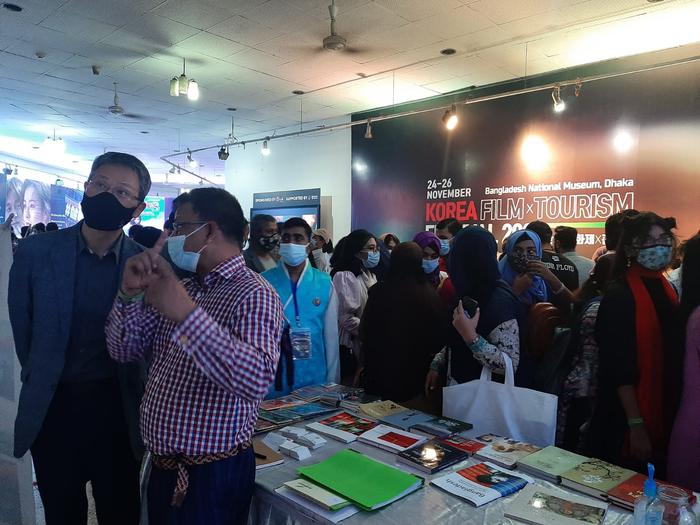
Korea is becoming a more and more popular destination for Bangladesh students even though the COVID-19 pandemic affected many aspiring Bangladesh youths wanting to study in Korea due to the visa restrictions. After the lift of visa restrictions in November 2021 an increasing number of students are going to Korea. The number of student visas my Embassy issued in 2019 just before the COVID-19 pandemic was around 450. In 2022 until now we have issued more than 600 student visas. The number of Bangladesh students going to Korea will continue to increase in the coming years.
Ashrafuzzaman Uzzal: According to the current state of both country's bilateral trade status, how does H.E see the future trade relations?
Lee Jang-keun: The bilateral trade volume between Korea and Bangladesh reached a record high in 2021 crossing 2 billion US dollars. According to the Korean statistics, in 2021 Korea’s export to Bangladesh was 1.636 billion US dollars, 58% increase from the previous year, while Bangladesh’s export to Korea was 552 million US dollars, 40% year-to-year increase.
The increase of bilateral trade is a very natural and welcoming development. In this regard, I would like to point out that the bilateral trade volume between our two countries has been stagnant almost 10 years after it reached 1.63 billion US dollars in 2011. During the pandemic in 2020 it dropped to 1.4 billion US dollars.
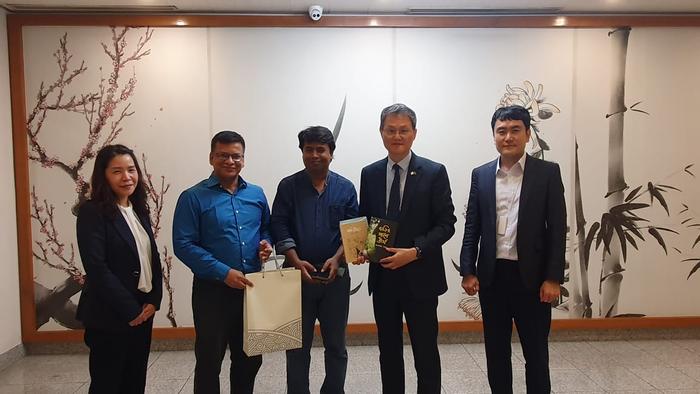
This year in 2022, the increasing trend of bilateral trade is continuing. During the first half of 2022, Korea’s export to Bangladesh increased by 43.2% year-to-year with 1 billion US dollars, while Bangladesh’s export to Korea grew by 34.3% with 342 million US dollars. Considering the solid continued economic growth of Korea and Bangladesh, I expect the bilateral trade will further increase in the future.
However, diversifying trading items, in particular Bangladesh’s export items to Korea, is a major challenge both countries are tackling now. At present garments and textile account for 83% of Bangladesh’s export to Korea. Bangladesh should make full use of the duty-free and quota-free access to the Korean market which the Korean Government has accorded to Bangladesh since 2012.
Ashrafuzzaman Uzzal: Since the independence of Bangladesh, Korea has become one of the largest development partners of the nation. How does H.E see these continued flow of aid and cooperation in the future based on our current economic growth?
Lee Jang-keun: Development cooperation is one of the areas where Korea places high priority in its relations with Bangladesh. As a country which could successfully develop its economy with the help of foreign donors, Korea wishes to share our knowledge and experience with other developing countries.
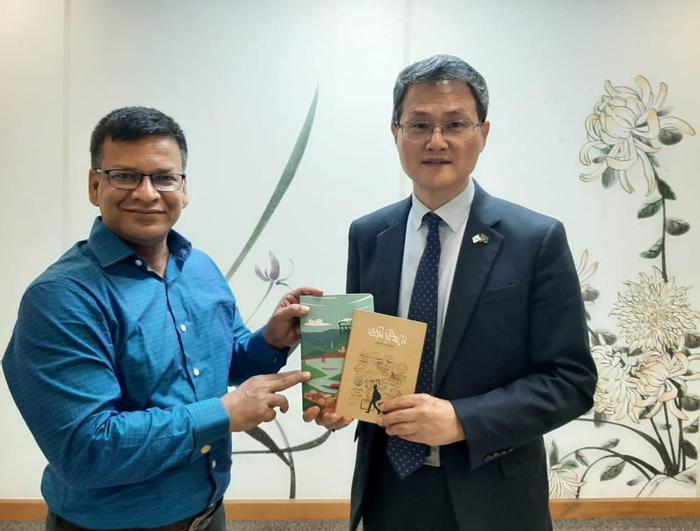
Bangladesh is currently the second largest recipient of Korea’s development assistance after Vietnam. So far Korea has provided 160 million US dollars in grants through KOICA, Korea’s development cooperation agency. Also, the Korean government has provided 1.34 billion US dollars in EDCF soft loans for 27 projects in various sectors, including public administration, ICT, human resources development, transportation, water management, health and so on. The BSMMU Super Specialized Hospital which will be inaugurated soon is a prime project financed by the EDCF loan which has a very low interest rate with a long repayment period.
Korea’s development assistance is expected to continuously increase in the future which will support various development projects of the Bangladesh Government and help the smooth transition of the country’s LDC graduation in 2026. Korea recently decided to significantly increase the volume of its soft loan to Bangladesh from 700 million to 3 billion US dollars for the period of 2021 and 2025.
Ashrafuzzaman Uzzal: Earlier we heard that Korea wants to manufacture cars in Bangladesh as it considers the country an important destination for trade and investment. Any development in this regard?
Lee Jang-keun: As Bangladesh's economy keeps advancing, the automobile consumer market is also expanding. This means that Bangladesh is becoming an attractive market for Korean automakers.
At present, Hyundai Motors in partnership with a local Bangladesh company, Fair Technology, plans to assemble its automobile locally in Bangladesh. Fair Technology is setting up a manufacturing plant on 6 acres of land at Kaliakair Hi-Tech Park in Gazipur with technical assistance from Hyundai Motors. It is expected to start producing the Hyundai cars within the year.
Ashrafuzzaman Uzzal: Do you have any plan for Bangladesh- Korea bilateral tourism development?
Lee Jang-keun: While there is no specific plan for bilateral projects in the tourism sector, my Embassy is making various efforts to increase people-to-people exchanges which include tourism. Last year in October my Embassy organized a Korean tourism exhibition in parallel with the Korean Film Festival at the National Museum of Bangladesh in Dhaka. Thousands of Bangladesh people participated and experienced a Korea tourism program prepared by the Embassy.
Also, we are making an effort to establish direct airline connections between the two countries. Currently chartered passenger flights operate between Dhaka and Incheon weekly. It first started carrying Koreans living in Bangladesh to Korea during the COVID-19 pandemic in April 2020 when international commercial airlines suspended operations. Now the chartered flight is carrying Bangladesh expatriate workers as well as students going to Korea.
On the other hand, the Bangladesh authority views Korea and Koreans as one of the potential tourists the country can attract. I understand that the number of Koreans arriving in Bangladesh has been among the top among the foreign tourists.
Korea and Bangladesh will celebrate together next year the 50th anniversary of diplomatic ties. It will provide a meaningful momentum to boost tourism between the two countries and people.
Ashrafuzzaman Uzzal: Foreign minister AK Abdul Momen sought support from South Korea in sending back Rohingya people sheltered in Bangladesh. What is Seoul's view about this issue?
Lee Jang-keun: Korea has been supporting the Bangladesh government and international community for the early, safe, voluntary and orderly repatriation of the Rohingya refugees to their homeland which will be the only ultimate solution to the current international Rohingya refugee crisis.
To this end, the Korean Government has been providing humanitarian assistance for supporting the Bangladesh host community as well as the Rohingya refugees sheltered in Cox’s Bazar through international humanitarian agencies such as UNHCR, IOM, WFP, UNICEF and IFRC. Our annual contribution through these agencies is about 4 to 5 million US dollars. Korea also provided support for the refugees relocated to the Bashan Char last year.
Wishing that there will be substantial progress in the negotiations among the concerned countries, Korea will continue to support the efforts of the Bangladesh government and the international community for the repatriation of the Rohingya refugees.
Ashrafuzzaman Uzzal: H.E, during a recent meeting with science and technology minister Yeafesh Osman handed over the MoU cross-signed by his Korean counterpart, minister Lim Heysook. What is the significance of this MoU, what is in it?
Lee Jang-keun: Korea and Bangladesh signed an MOU on Scientific and Technological Cooperation on 30 December, 2021. The MOU was to strengthen the implementation of the Agreement on Scientific and Technological Cooperation between the two Governments signed in May 1995. It has laid the institutional foundation to further promote cooperation in science and technology areas between the two governments by stipulating various areas and forms of cooperation including the establishment of a Joint Committee.
As one of the most advanced countries in science and technology areas across the globe, Korea is committed to enhancing scientific and technological collaboration with Bangladesh in areas of mutual benefit.
Ashrafuzzaman Uzzal: Last year we heard that South Korea has expressed its keen interest to preserve the historic Panam City for the benefit of future generations and to attract tourists, built in Sonargaon in Narayanganj in the early nineteenth century, about 37 kilometres south of the capital city Dhaka. Any development on it?
Lee Jang-keun: In fact, it was not the Korean government but a Korean company which expressed its willingness to contribute to the preservation of the historic Panam City. This Korean company, Youngone Corporation, which is operating the KEPZ, Korean Export Processing Zone, in Chattogram already initiated the restoration of the Baro Sadar Bari in Sonargaon next to the Panam City with its own financing.
My understanding of the current status of this idea of Panam City restoration is that it is not making progress due to the differences in the specific conditions of the restoration work between the Korean company and the Bangladesh government.
Ashrafuzzaman Uzzal: South Korea is still a dream destination for Bangladeshi migrant workers. Any plans or thoughts for Bangladeshi workers to get opportunities there?
Lee Jang-keun: The Korean Government has been recruiting unskilled foreign workers from 16 selected countries including Bangladesh through a program called Employment Permit System(EPS).
According to an MoU signed between the two governments in 2008, so far around 20,000 Bangladesh expatriate workers have been dispatched to Korea. The annual quota allocated to Bangladesh has been around 2,000. But this year it is expected that around 4,000 Bangladesh workers will be admitted to Korea which is a record high number. A total of 2,594 Bangladesh workers have been admitted to Korea between January and July 2022.
My Embassy is working closely with Bangladesh authorities not only to increase the number of workers but also to diversify the areas of employment including fisheries and agriculture.
Expatriate workers have been a central pillar of Korea-Bangladesh friendship and will continue to play an essential role in strengthening the friendly ties between our two countries.
Lee Jang-keun: Ambassador, Republic of Korea


